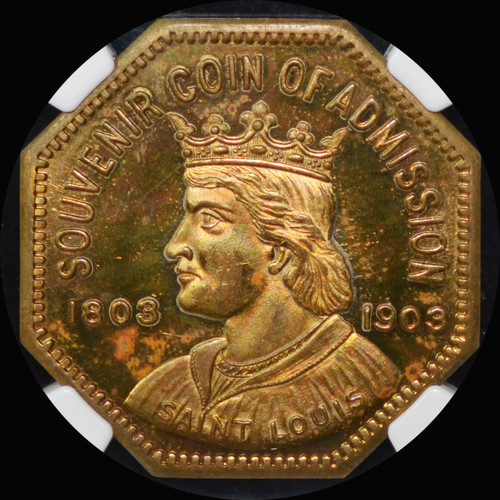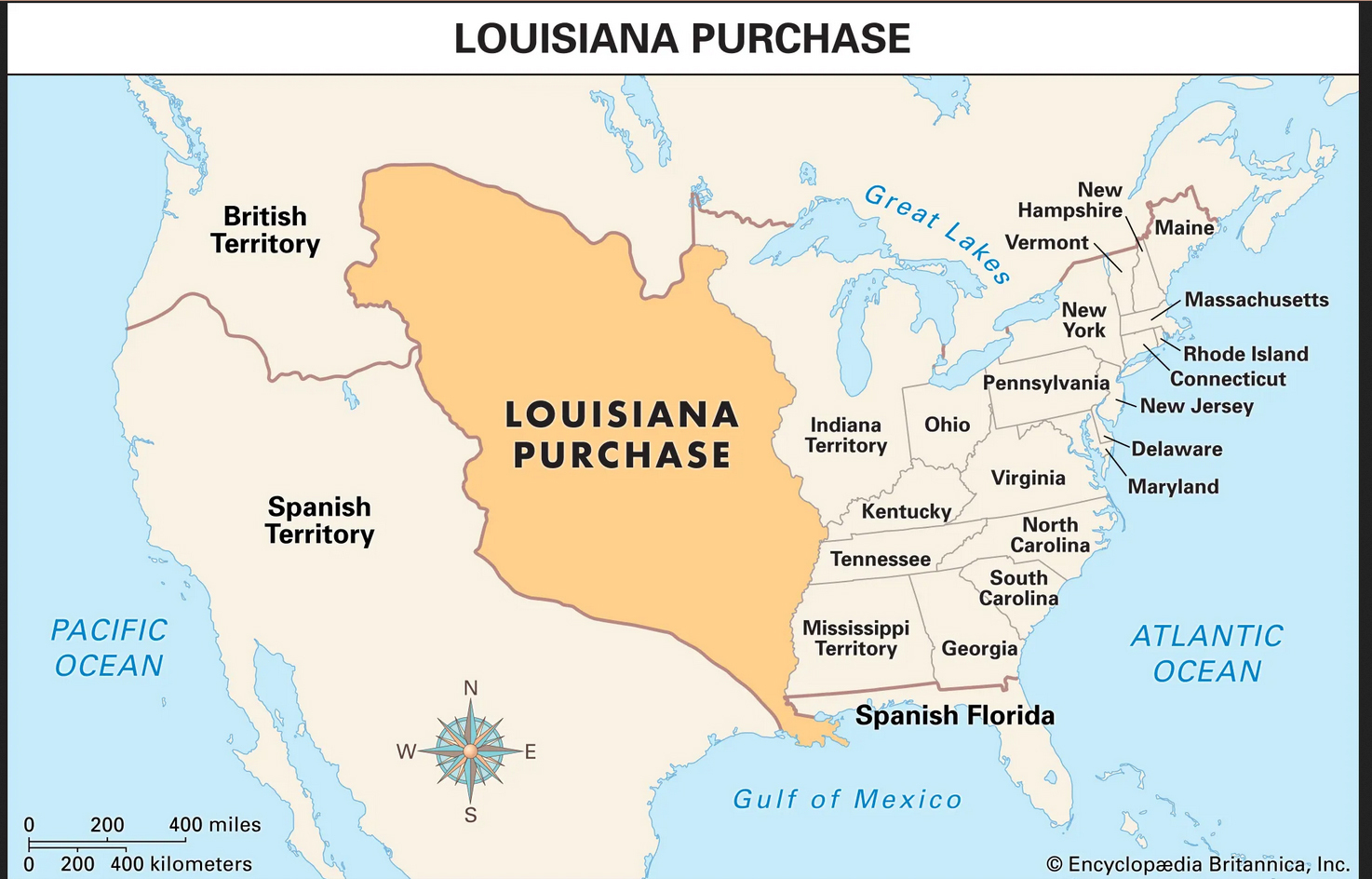NGC MS63 PL 1904 Louisiana Purchase Exposition, Souvenir of Admission, Serial #27367, Brass Medal , HK-306, R.4
Brand : NGC
SOLD
NGC MS63 PL 1904 Louisiana Purchase Exposition, Souvenir of Admission, Serial #27367, Brass Medal , HK-306, R.4
The Louisiana Purchase (French: Vente de la Louisiane, lit. 'Sale of Louisiana') was the acquisition of the territory of Louisiana by the United States from the French First Republic in 1803. This consisted of most of the land in the Mississippi River's drainage basin west of the river. In return for fifteen million dollars,[a] or approximately eighteen dollars per square mile,[b] the United States nominally acquired a total of 828,000 sq mi (2,140,000 km2; 530,000,000 acres) in Middle America. However, France only controlled a small fraction of this area, most of which was inhabited by Native Americans; effectively, for the majority of the area, the United States bought the preemptive right to obtain Indian lands by treaty or by conquest, to the exclusion of other colonial powers.
The Kingdom of France had controlled the Louisiana territory from 1682 until it was ceded to Spain in 1762. In 1800, Napoleon Bonaparte, the First Consul of the French Republic, regained ownership of Louisiana in exchange for territories in Tuscany as part of a broader effort to re-establish a French colonial empire in North America. However, France's failure to suppress a revolt in Saint-Domingue, coupled with the prospect of renewed warfare with the United Kingdom, prompted Napoleon to consider selling Louisiana to the United States. Acquisition of Louisiana was a long-term goal of President Thomas Jefferson, who was especially eager to gain control of the crucial Mississippi River port of New Orleans. Jefferson tasked James Monroe and Robert R. Livingston with purchasing New Orleans. Negotiating with French Treasury Minister François Barbé-Marbois, the U.S. representatives quickly agreed to purchase the entire territory of Louisiana after it was offered. Overcoming the opposition of the Federalist Party, Jefferson and Secretary of State James Madison persuaded Congress to ratify and fund the Louisiana Purchase.
The Louisiana Purchase extended United States sovereignty across the Mississippi River, nearly doubling the nominal size of the country. The purchase included land from fifteen present U.S. states and two Canadian provinces, including the entirety of Arkansas, Missouri, Iowa, Oklahoma, Kansas, and Nebraska; large portions of North Dakota and South Dakota; the area of Montana, Wyoming, and Colorado east of the Continental Divide; the portion of Minnesota west of the Mississippi River; the northeastern section of New Mexico; northern portions of Texas; New Orleans and the portions of the present state of Louisiana west of the Mississippi River; and small portions of land within Alberta and Saskatchewan. At the time of the purchase, the territory of Louisiana's non-native population was around 60,000 inhabitants, of whom half were enslaved Africans. The western borders of the purchase were later settled by the 1819 Adams–Onís Treaty with Spain, while the northern borders of the purchase were adjusted by the Treaty of 1818 with the British.












